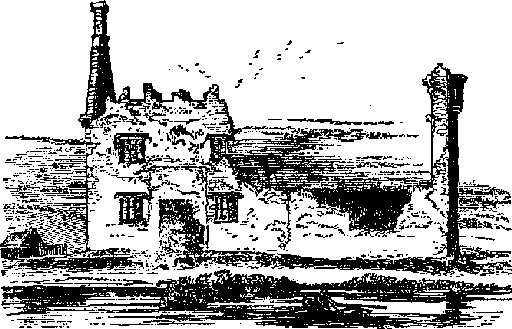Chapter 3: Gaillimh to Eanach Dúin (Annaghdown)
- Terrilan Castle
- Menlo Castle
- Claregalway
- Creag Castle
- Hags Castle
Return to table of contents
Refer to Map
"Now then, time's up--strike the bell--stand by good people, the gentlemen don't want any more lobsters at sixpence a piece -- shove along that vagabond pig -- get these barrels and meal bags forward -- pull in the gangway -- throw off the line -- move her ahead."
We are afloat on the River Gaillimh, with our starboard alongside Tír
Oileáin, (probably "The Holm land")--the runied castellated mansion, figured
in the illustration,

Numerous are the legends still repeated of the prowess of the De Burgos, and the wiles and daring of the O'Flaherty's, in connexion with this castle, erected to defend the river's ford at this point. It is frequently alluded to in the "Annals of the Four Masters," and in other authentic histories, and so late as 1641 it was garrisoned by Diarmuid Ó Dálaigh. Where the earliest Castle of Gaillimh absolutely stood, unless at this spot, it is now difficult to determine. Tuirgéis, the sanguinary Danish commander, overran Connacht in 835, and "the ancient town of Galway was destroyed." Hardiman says, the Castle Dún bun na Gaillimhe, or the fortification at the mouth of the Galway river, was erected soon after the defeat of the Danes at Clontarf; and then its erection, and the improvement of the town, were a source of jealousy to the people of Munster, between whom and those of Connacht there had long existed a considerable degree of competition. Conor, King of Munster, in 1132 despatched a body of troops by sea, commanded by Cormac Mac Carthaigh, who besieged and took the Castle. Again, in 1149, Turloch O Briain, King of Munster, invaded Connacht, and destroyed the town and Castle of Gaillimh, which ravages, however, appear to have been soon repaired. In 1230 Hugh O'Flaherty, chief of his name, fortified himself in the Castle of Gaillimh, which, by his spirited resistance, he was able to keep against De Burgo.